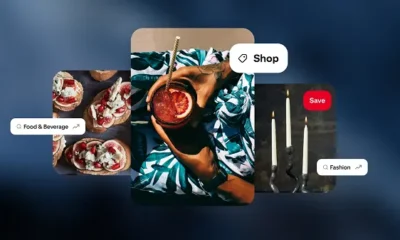SEO
7 Social Commerce Tips & Who’s Doing It Right

Selling products on social media platforms (also known as social commerce) has emerged as a viable digital advertising strategy for ecommerce brands worldwide.
With social commerce, you can leverage social media to engage with your target customers and encourage them to complete the sale on their favorite apps without ever needing to visit your website.
It’s incredibly convenient, especially considering 54% of internet traffic comes from mobile devices.
Check out the following social commerce best practices and examples of which brands are getting it right.
1. Get To Know Your Audience Profile
If you want the best engagement rates, you must align your social commerce strategy with the recipients of your brand’s message (your target audience).
Getting to know your target social audience does take time and effort, but it makes a difference in conversions and sales.
It’s no secret that you can expect better results when you convey the right message using the right platform to the right people.
Instead of just using the same messages on your website, be more intentional in choosing products and wordings that align with your specific social media customer subset.
Use analytics to stay informed on demographic and performance data to help you identify which products to include in the listing and how to position them.
For example, Target created a fantastic browsing experience for their Instagram users by using smart listing based on hashtags and content engagement and constantly upgrading their product offerings.
Customers who click on a product on Instagram no longer leave the app to complete the sale.
2. Stay Creative With Your Social Storefront
People have already changed their shopping habits thanks to the pandemic.
Since most shoppers now learn about brands via social media, you must rethink your social profiles as they serve as your brand’s digital storefront.
Keep in mind that you only have one shot at creating a good impression.
Create a fantastic buying experience because your social media profile’s ambiance is just as important as the products you sell.
You can attract repeat business by making a winning customer experience backed by quality products.
For example, The Tiny Tassel retail shop has a digital storefront via their Facebook Shop.
They created product pages specifically for Facebook with information like style, material, and shipping details.
All their listings provide value and build trust, which is essential to attract new customers to make their first purchase.
3. Schedule Consistent Promotional Posts
Creating promotional posts is an excellent way to share more product details, such as close-up product shots, short demos, and walk-throughs.
You can even add links to your posts which helps you:
- Create better brand awareness.
- Meet more customer demands.
- Streamline the purchase process.
Take this example from Ralph Lauren.
Notice how they use a combination of products to showcase their seasonal collection.
This strategy gives the shopper a better idea of how the different products look when worn together (or layered).
4. Humanize Your Social Media Replies
One of the primary reasons people reach out to brands on social media is the immediate response. Social media makes it easy to connect if customers want more information on products, order inquiries, or general questions. Instead of just giving a simple answer, you can:
- Recommend a product.
- Share a direct link to purchase.
- Offer a promo code to secure the sale.
This interaction is also an opportunity to show your brand’s personality and build trust with the shopper.
Overall, it’s a winning scenario because you deliver outstanding customer service while potentially increasing your bottom line.
Here is an example of Vicidolls doing just that via their Instagram page.
5. Use Analytics To Guide Your Strategy
Working in the dynamic world of social commerce requires trackable metrics.
So rely on your social media analytics to understand what’s working and what isn’t.
Diving deeper into analytics will uncover new opportunities and assess which social commerce posts drive sales.
From there, you can adjust your strategy and make your future posts more compelling to potential customers.
You can also use data to guide the design and functionality of your social media assets.
For instance, you can customize Pinterest boards to act as your product navigation tool for your audience.
Patagonia’s Pinterest board does a great job because its product pinboards mimic its website navigation.
Thus, they create a similar feel for loyal customers while attracting potential new customers.
Similarly, you must create a consistent brand experience to pave the way for instant recognition for your audience.
6. Streamline The Checkout Process
Studies show that mobile users have a higher cart abandonment rate than desktop users, at a whopping 85.65%.
Therefore, when buyers move to smaller screens for daily purchases, it’s vital to gain full support with a streamlined checkout process.
Social commerce helps because it removes the drop-off points that result in abandoned transactions.
Now, customers don’t have to make personal accounts to shop on your site.
Instead, they can use their social media profiles for a seamless transaction.
Instagram business accounts like Spearmint Baby make shoppable posts that provide relevant information and pricing.
You can upload up to 30 of your best-selling products into a catalog (or link to corresponding product pages on your site if the items are not in the catalog).
In addition, brands can now host a Live Shopping event on almost all social platforms.
Live Shopping allows the company to discuss the product, answer questions, and even pin a product from the catalog on-screen during the stream.
Make the broadcast interactive and inform viewers why this product is indispensable in their lives.
When they click on the product picture, it will show a keyword-rich description, making it detailed, catchy, and concise.
From there, the customers can readily purchase the item using a credit card or e-wallet without leaving the app.
Here is an example of Hollister utilizing IG Live Shopping.
First, the left photo shows the video in your list of Live Shopping videos.
(Hint: To see all of the Live IG Shopping, visit the shopping tab on your Instagram, and at the top, scroll over until you see the Live category.)
Then you can click into the video, and finally, you have the option to “view products.”
7. Collaborate With Social Influencers
Finally, consider influencer marketing.
It is not a new concept, but you can optimize it to expand your reach and improve social sales.
For example, when influencers use shoppable tags on IG, they push potential buyers directly to your shop.
This approach curates an engaging experience for your customers because they can see a Live Story from an influencer promoting your product.
Then, when they click on a link, they can make an Insta-purchase.
With so many people following what influencers recommend, this is an ideal opportunity to expand your audience.
Here is the influencer Alexa Anglin doing just this for Walmart.
In Closing
Take note of the brands mentioned above who are winning the social commerce game – there’s no reason your business can’t do the same!
Follow the tips to stand out on social media and make it easy for customers to purchase via your brand’s social profiles.
More resources:
Featured Image: fizkes/Shutterstock



















You must be logged in to post a comment Login